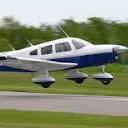As the title suggests, what are the big advances in propulsion heading into the 20s and into the 30s?
At the moment we have GE/Safran in a strong position with leap, especially given its popularity on the neo. But, what’s next for cfm and leap? My understanding is that cfm have focused on mainly engine core tech and materials, rather than the p&w approach of fan and gearbox tech. Cfm seem to be pushing the boundaries of temps and pressures with leap. What’s the next step? Gearbox?
GE. What happens after nx and 9x? I know they’re in very different size categories but which engine is more advanced. The nx came first but are there still technologies in this engine that haven’t yet transferred to the 9x?
Is an updated genx in the works for a 787 re-engine? What tech will it have? Where do the efficiency advances come from?
P&W. Is there any sign on Pratt on a wide body anytime soon? Apart from 767. What are they doing in house to prepare for the next advance in engine tech? Or are they relying on simply scaling up their gtf for a bigger aircraft? How advanced is the gtf core in comparison to leap or even 9x?
RR. Not sure where to start. Big issues on the T1000. How is the -10 variant going? How is the T7000 engine performing? And the xwb? From a tech standpoint, where do RR sit co pared the ge and Pratt?
I know they have ultrafan in the works. Apart from a gear box, will this be a fairly limited tech rise engine? Ie. xwb with a gb?
Sorry for all the questions. Just wanted to start a topic dedicated to the engines of the next 10-15 years.



